Jim Stratton
Reviews By Author
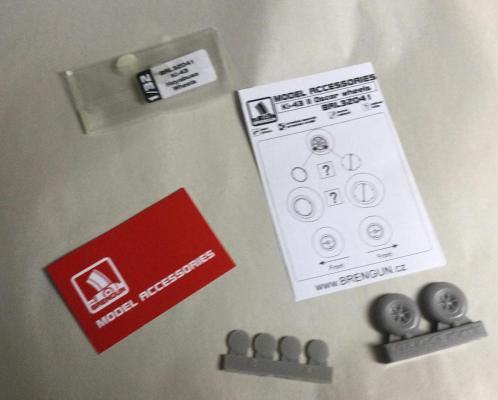
|
Ki-43 II Hayabusa Wheels (Oscar)Published:
Brengun, from the Czech Republic, has released a nice set of resin wheels to help dress up any 1/32nd scale Hayabusa Ki.-43 Oscar. The wheels are beautifully molded in a dark gray resin and are clean and defect free. The product packet includes two wheels with a nicely detailed spoked wheel, as well as two choices of wheel covers. One flat cover features four bolt heads. The second cover has a centerline seam and six bolt heads. There is also a clearly printed instruction sheet. I built the old Hasegawa Ki-43 and found that when applying the wheels that the molded hole on the resin wheel fit nicely to the axle with only minor sanding. I chose to use the spoked version as I thought them more interesting. In fact, the Brengun wheels were the highlight of this build and… more |
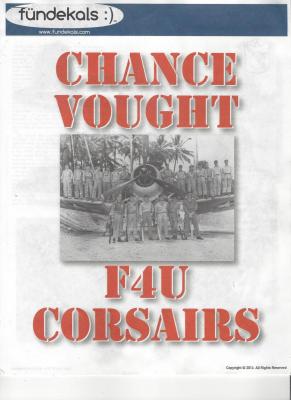
|
Chance Vought USMC F4U Corsairs DecalsPublished:
Opening the package of decals you will find two large sheets of beautifully printed markings for no less than nine Corsairs These aircraft include mostly F4U-1A’s with markings for two F4U-1D’s and one late war FG-1D. There is no instruction booklet included in the package. However going to the Fundekals website you can download the instruction booklet as a PDF file. I call this an instruction booklet as it is comprised of 24 pages of Color and B&W illustrations and photographs of each of the aircraft covered on the sheet. Also in the booklet are precise instructions pointing out the various differences in each of the covered aircraft. A detailed history of each covered aircraft and its pilot is included. A really nice touch was a page covering the various different antenna… more |
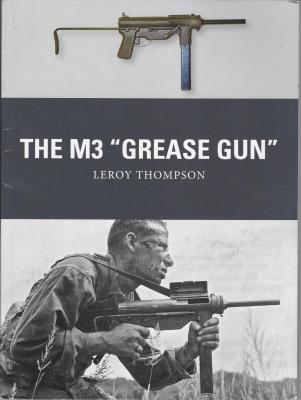
|
The M3 Grease GunPublished:
This is the forty sixth volume in the Weapon series. This volume deals solely with the 45 cal. M3 sub machine gun, which was commonly called “The Grease Gun” because of its resemblance to the mechanics grease gun familiar to so many young men in the army. It has also been called Americas Sten Gun because like its British counterpart it was designed to be made with stamped metal welded together. This simple design made it really cheap to manufacture with a net cost of $33.33 to the government. It is hard to believe that this weapon was used by the military for almost 50 years. This 80 page paperback book is full of pictures and illustrations. Both B&W and color. There is a picture or image on practically every page. The full color illustrations are in the fine detail that the… more |
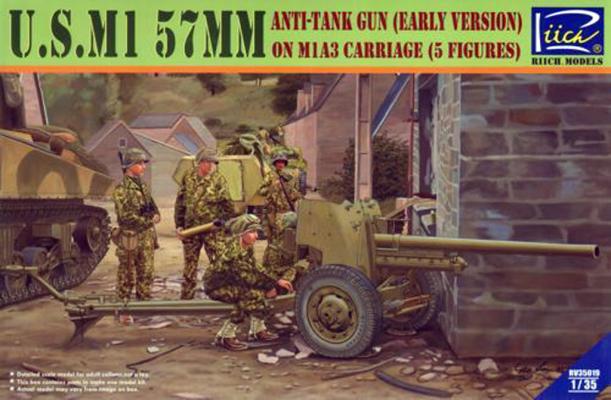
|
U.S. M1 57mm Anti-Tank GunPublished:
HistoryThe British 6 Pounder Anti-Tank gun was manufactured in the US, in 1942. In early 1943, the US Army adopted it for their use and called it the 57mm Anti-Tank gun M1. The version adopted for the army was modified and supplied to the army with a modified towing hitch and “Combat” wheels. Most branches of the US Army considered the weapon as too heavy and it was also hampered by the lack of ammunition. In 1943 only simple armor piercing ammo was manufactured. It wasn’t until late 1944 before adequate AP ammunition was made available. The M1 could penetrate 75mm of armor angled at 30 degrees at a distance of 3000 meters. In spite of the shortcomings, by early 1944 the M1 had become the standard towed anti-tank gun of the US Army Divisions. The prime mover for the M1 57mm… more |
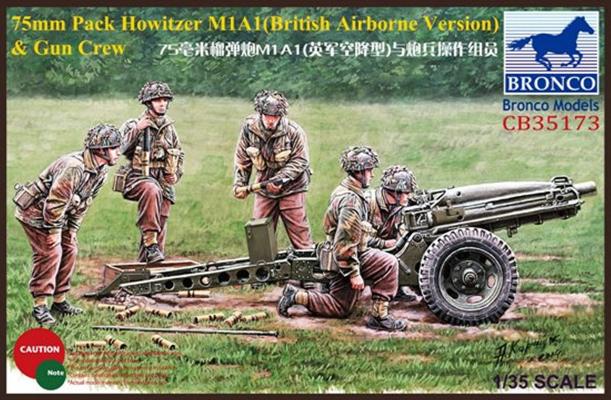
|
75mm Pack Howitzer M1A1 & Gun CrewPublished:
Following their release of the 75mm Pack Howitzer with ¼ ton truck and crew, Bronco has released a British airborne version with a crew of five. When this kit came up for review, I had just finished building Vision’s 75mm Pack Howitzer and thought it would give me an opportunity to compare the two kits. Much to my surprise the Bronco kit is the Vision kit with a new sprue added to detail up the original kit. There are two sets of trails on the pack howitzer. The front trails and the rear trails. Both sets are hollow, with lightening holes on the sides. The hollow front trails house the equilibrator springs and the rear trails are just hollow. Vision released the original kit with a one piece molding of the rear trails, which looked okay but really didn’t represent the hollow trails to… more |

|
M4A1 Deep Wading KitPublished:
HistoryThe need for armored support early on during an amphibious invasion was indicated early in the war. It was apparent that there might not be a chance to unload armored vehicles directly on the beaches. This meant that invading armor would need to be unloaded off shore and wade to the beach. In order to do this the tank needed to be waterproofed and a means to supply air to the intakes and to dispel exhaust gases would have to be designed. The answer to this problem was the deep wading kit. These were usually manufactured on site and consisted of a quick release upper stack mounted to a lower stack. The forward stack was for the intake and the rear stack was the exhaust. Once the stacks were in place, the tank was further waterproofed by sealing the transmission, the… more |

|
Browning M1919 .30 Caliber BarrelsPublished:
HistoryThe Browning M1919 was introduced after the end of the First World War and soldiered on for several decades. It saw action in WWII, the Korean Conflict as well as in Viet Nam. It was used as a light infantry support weapon, mounted in aircraft and vehicles as a self-defense weapon and used as an anti-aircraft machine gun. It was used by several countries. It can be seen sticking out the frontal armor on all US tanks, as well as being the common coaxial gun alongside the main gun in US built armored fighting vehicles. These sets will be a welcome addition to modelers wanting to update their .30 caliber crew serviced machine guns. Each set includes two turned brass barrels with perforated cooling jackets. Set 35-004 has the two piece conical shaped muzzle and 35-005 has… more |

|
US Marine vs. Japanese Infantryman - Guadalcanal 1942–43Published:
US Marine versus Japanese Infantryman: Guadalcanal 1942–43 is the eighth volume in Osprey’s Combat series and the first dealing with an American fighting force in WWII. Fortunately, this volume deals with the US Marines. There are never enough references covering the USMC, so this volume is a welcome release. This new book deals with the Marines fighting the Japanese infantry during the Guadalcanal campaign. However, it only deals with the first three months of the Marine’s involvement, concentrating on the three main battles that occurred during the three months: the Battle of the Tenaru in August, the Henderson Field attack in September and finally the Matanikau counteroffensive in October. The book is 80 pages. Although it is full of clear, crisp black-and-white… more |
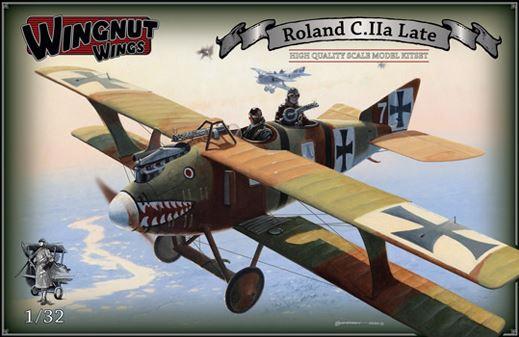
|
Roland C.IIa LatePublished:
HistoryThe prototype Roland C.II first flew in October 1915 and quickly proved to be faster than most fighters. 50 Roland C.II’s were ordered in December 1915 and was equipped with a rounded rollover hoop as well as other minor early features. The second production batch ordered in early 1916 had many improvements, including strengthened wings, and the ability to install a bomb rack between the rear landing gear legs. This version became the C.IIa and 90 were ordered. The late C.IIa, the version this model represents, had a stick type control column and an enlarged vertical fin for better maneuverability. Nearly 130 of the late C.IIa’s were built. Unfortunately, by the time they saw service the initial advantage the type had, was lost due to the advancement in fighter… more |
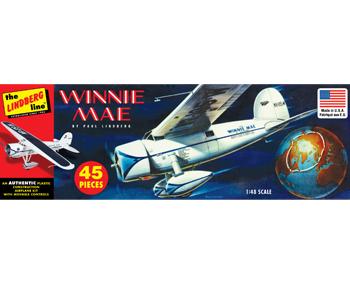
|
Winnie MaePublished:
IntroductionRound 2 Models continues re-releasing older kits with their latest release of a true classic Lindberg’s Winnie Mae. The Lockheed Vega was a true master piece of aviation engineering. The Vega was designed by Jack Northrop and Gerrard Vultee in 1926. The 27 foot long Vega was constructed of a molded plywood fuselage and a single spar wooden wing, which was a radical design and lacked the familiar wing struts. The Vega first flew on July 4th, 1927 and quickly became the favorite of many veteran pilots. The Vega was also used by several business firms and airlines, having flown with 47 different commercial airlines. In the late twenty’s and early thirty’s the Vega was constantly setting speed records. This prompted an early advertising slogan, “It takes a Lockheed… more |
